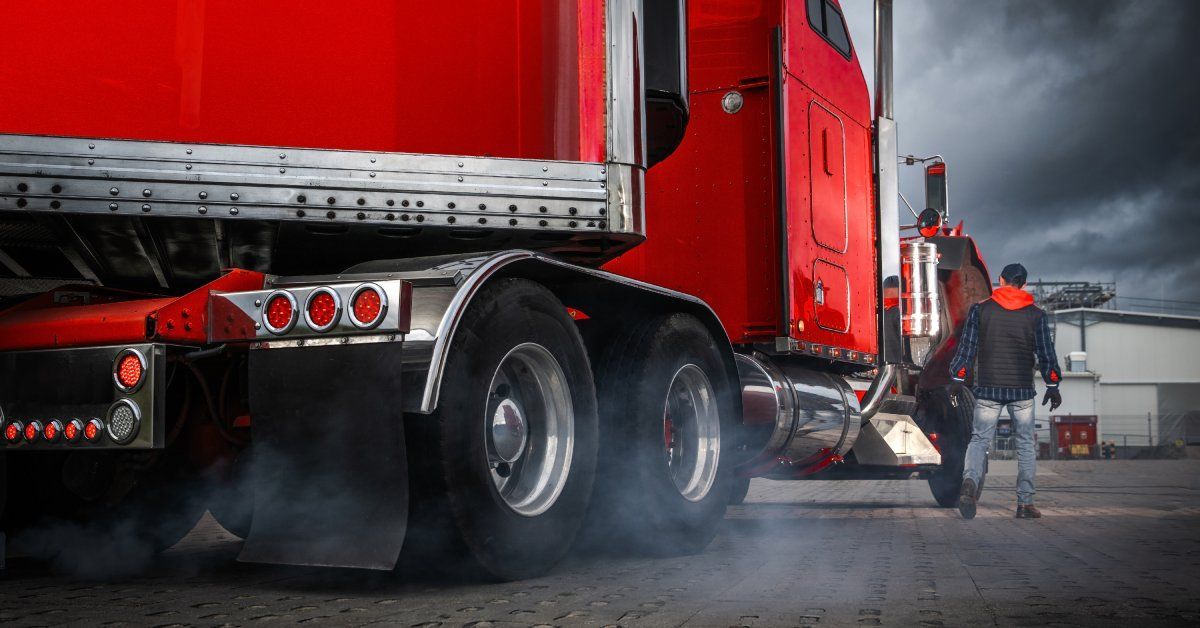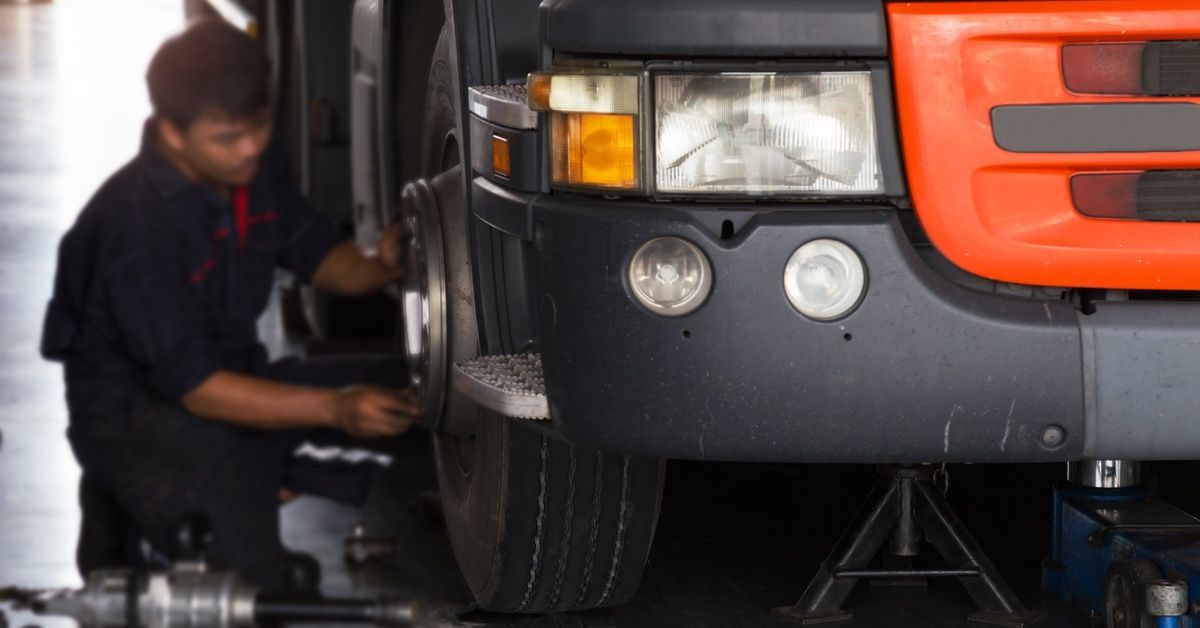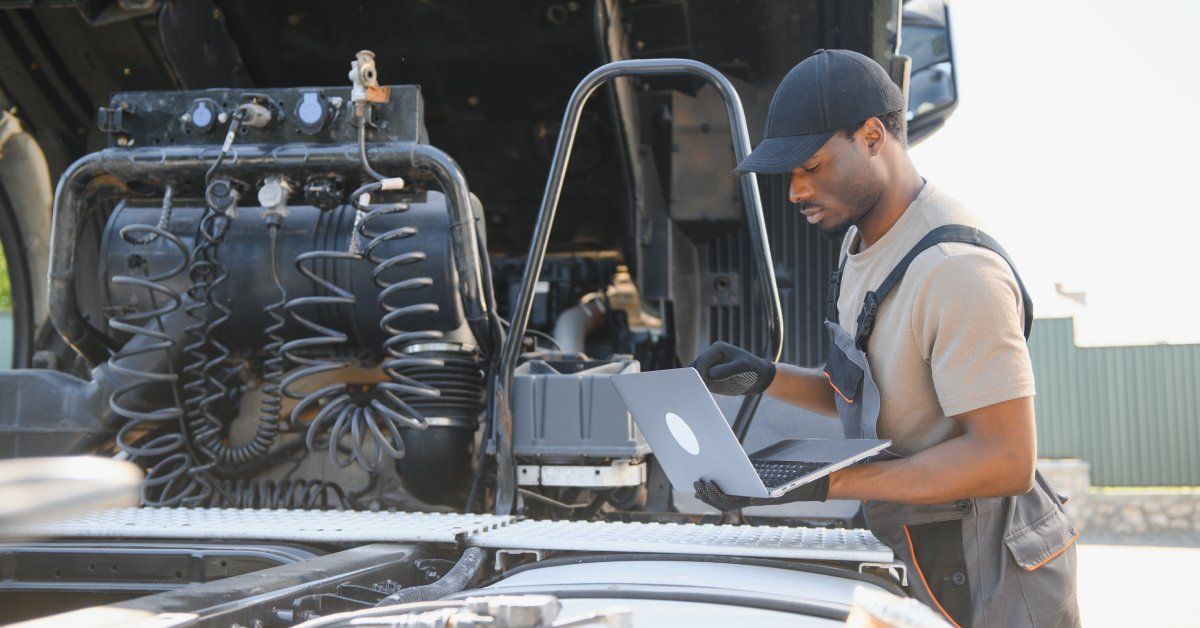How Seasonal Changes Affect Fleet Truck and Trailer Wear
Seasons come and go, but changes in the weather pose challenges for maintaining trucks and trailers. The sweltering heat of summer, the icy roads of winter, or the rain-soaked days of spring and autumn can take a toll on the performance and longevity of your vehicles and trailers.
Understanding how seasonal changes affect fleet truck and trailer wear helps with keeping operations running smoothly and safely. We’ll take a closer look at ways to help you protect your vehicles year-round.
Winter Challenges
Cold Climate Impacts
When temperatures drop, engine oil can thicken, making it harder for the engine to start and function efficiently. Additionally, battery capacity diminishes in the cold. A fully charged battery can lose up to 50 percent of its effectiveness at freezing temperatures, putting vehicles at risk of failure during morning starts.
Another area to monitor is the tire pressure of trucks and trailers. Air compresses in low temperatures, which can lead to underinflated tires, poor fuel efficiency, and increased chances of slipping on icy roads.
Winter also brings the risk of brake line freezing, especially in vehicles exposed to ice and slush for extended periods. Brake fluid does not freeze easily, but accumulated moisture in the brake lines can freeze and reduce braking capacity.

Wear and Tear Issues
The combination of freezing temperatures and constant exposure to moisture can lead to long-term wear and tear. Frame rust becomes a real concern since salt and water promote oxidation and deteriorate metal surfaces over time.
Electrical components can also weaken, as moisture paired with cold temperatures can damage wiring insulation and connectors. Windshields are another vulnerable area, and they may crack due to thermal shock when the glass goes from freezing temperatures to heated defrost cycles rapidly.
Maintenance Tips
To combat these winter challenges, start with regular undercarriage cleaning to remove road salt and debris that can corrode components. Checking antifreeze levels is another important step because this fluid protects the engine from freezing and maintains appropriate operating temperatures. Scheduling a comprehensive pre-winter inspection, including battery testing and brake system checks, can go a long way in preventing problems.
Switching to winter-grade engine oil is an excellent way to keep your fleet vehicles’ engines in peak condition. Winter oils are thin and flow more freely in cold weather. Additionally, routinely checking and maintaining tire inflation supports traction and fuel efficiency on slippery roads. When it comes to windshield care, invest in high-quality windshield wiper fluid rated for sub-zero temperatures, and regularly inspect wiper blades for damage.
Spring Challenges
Temperature Swings and Moisture
Spring brings unpredictable weather—one day, it’s chilly, and the next, it’s pleasantly warm. These temperature swings can cause materials like rubber and metal to expand and contract, leading to wear over time.
Seals and hoses may crack or lose their flexibility, resulting in leaks or reduced performance. Increased precipitation during the season can also contribute to moisture buildup and damage sensitive vehicle systems, such as the engine and electrical components, if not addressed.
Wear and Tear
Moisture and dirt are a dangerous combination for vehicles and trailers. Mud and debris can accumulate around the brakes, diminishing their effectiveness and creating a safety hazard. Similarly, water-damaged wiring creates the potential for corrosion or short circuits. Additionally, humidity in spring increases the risk of rust forming on a vehicle’s undercarriage, exposed metal parts, and fuel tank.
Maintenance Tips
Combatting spring challenges starts with preventative maintenance. Regularly inspect the brakes for accumulated mud and reduced functionality. Cleaning the area can prevent further complications. Take time to examine and clean electrical connections, ensuring they are free of corrosion and insulated against moisture. Applying rust inhibitors to exposed metal parts reduces the damaging effects of humidity.
Summer Challenges
Heat and Sun Exposure
The sweltering summer heat can take a toll on tires, cooling systems, and structural integrity. For example, prolonged exposure to high temperatures increases tire pressure, which can strain the rubber and increase the risk of blowouts.
Additionally, cooling systems work overtime to prevent engine overheating in the summer, and extreme heat can push them to their limits. Trailers can suffer as well; UV rays can weaken seals, fade paint, and cause structural wear over time.
Wear and Tear Issues
Summer conditions often magnify wear and tear in fleet vehicles. Overheated tires are common culprits of blowouts on long hauls, especially when you ignore tire pressure. Similarly, engines can overheat, particularly during heavy use or in stop-and-go traffic. UV damage is another major concern—paint fades, rubber seals crack, and interiors may become unbearably hot.
Maintenance Tips
Your first steps are to monitor coolant levels and confirm that the cooling system is functional in order to prevent engine overheating. Invest in heat-resistant lubricants to keep moving parts operating smoothly, even under high temperatures.
Check tire pressure and tread wear regularly—keeping them at the ideal psi reduces the chances of blowouts and increases fuel efficiency. Finally, park vehicles and trailers in shaded areas or use protective covers whenever possible to minimize UV damage to exteriors and interiors.
Fall Challenges
Falling Temperatures and Debris
As fall ushers in cooler temperatures, it also brings unique hazards for fleet vehicles. Fallen leaves can create slippery road conditions that can reduce tire grip and increase the risks of skidding. Beyond those dangers, leaves can clog air filters, drainage systems, and vents.

Wear and Tear
The transition to autumn also marks the beginning of cold-weather vehicle strain. Leaf buildup in air filters can block airflow, reducing engine efficiency and performance. Additionally, fog and early morning condensation can reduce visibility for drivers and increase the chances of accidents. Cold temperatures can exacerbate wear on critical vehicle systems, such as batteries, potentially leading to premature failures.
Maintenance Tips
During the fall, you should make it a habit to check and clean your fleet trucks’ air filters. Next, service the heating systems so your drivers stay warm, comfortable, and safe as the temperatures drop. Don’t forget to inspect tires, brakes, and fluid levels. Creating a solid maintenance plan now means less downtime and more efficiency as the seasons shift.
Seasonal changes can negatively affect your fleet trucks and trailers, but you can stay ahead of the curve with the right approach. Trailer Tech is here to make every turn easier. By offering expert trailer repair in Lubbock, TX, we can help you prepare for any seasonal challenges and keep your fleet running smoothly all year round.










